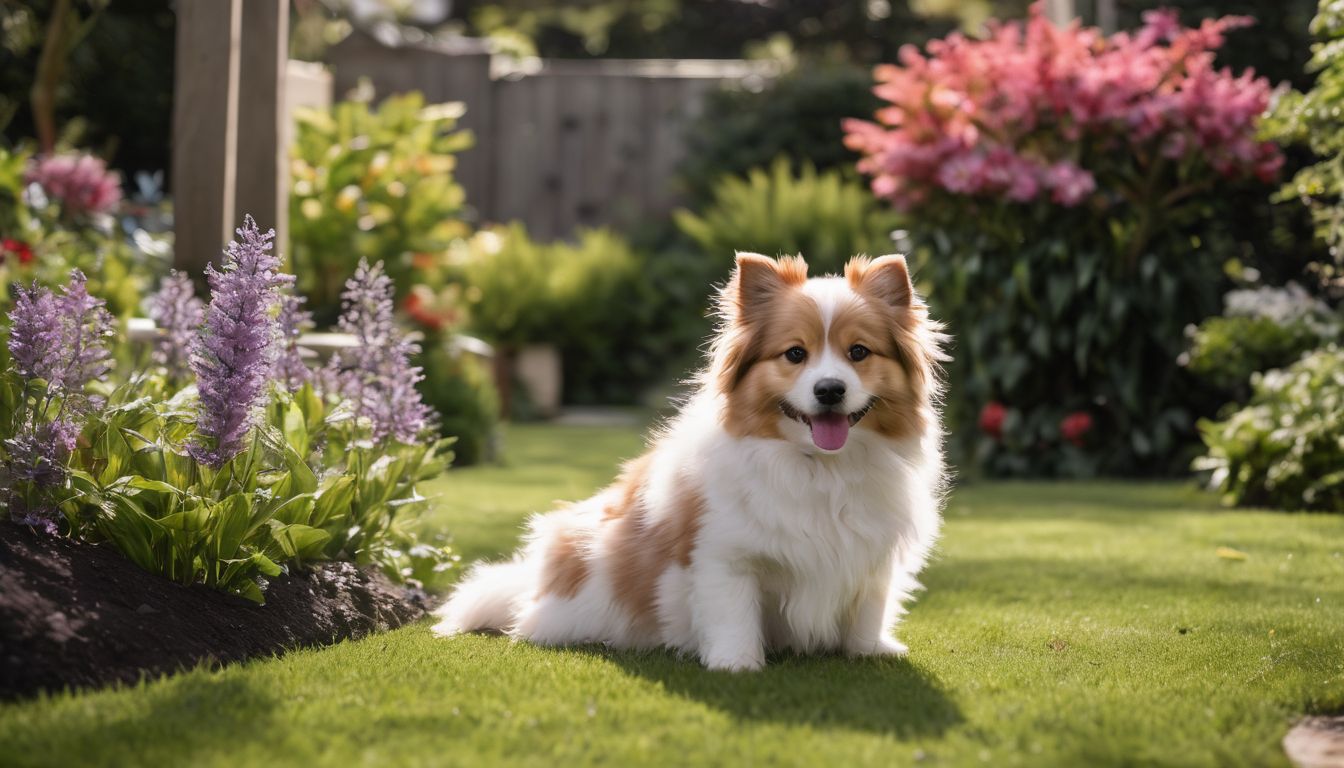Pets bring joy to our homes, but did you know they can affect the air we breathe? Pet dander and odours can significantly impact indoor air quality. This article will guide you through understanding these effects and offer practical solutions to keep your environment healthy for both you and your furry friends.
Dive in for some breath of fresh air tips!
Key Takeaways
- Pet dander, fur and saliva are key allergens affecting indoor air quality; regular grooming of pets can limit this impact.
- Immediate cleaning of pet waste and use of enzymatic cleaners for odours help maintain a fresher home environment.
- Air purifiers with HEPA filters are effective in capturing airborne pet allergens, contributing to healthier indoor air.
- Hypoallergenic pet products reduce the risk of allergic reactions in sensitive individuals while minimising pollutants indoors.
- Establishing specific areas where pets are not allowed aids in keeping certain parts of the home free from pet-related allergens.
How Pets Affect Indoor Air Quality
Pets can negatively impact indoor air quality through the release of dander, fur, and saliva as allergens, as well as pet waste and odours. Additionally, pet products themselves can be sources of indoor pollutants.
Dander, fur, and saliva as allergens
Animal dander, the tiny flakes of skin shed by cats, dogs, and other furry or feathered pets, is a common trigger for allergy symptoms. It floats in the air before settling on surfaces throughout your home.
Fur also contributes to indoor air pollution as it collects dust and pollen from outdoors before being carried inside. Saliva contains proteins that can cause allergic reactions too; when pets clean themselves, these proteins stick to their fur and eventually become airborne allergens.
Keeping your living spaces free from these irritants requires consistent cleaning efforts. Regularly grooming animals reduces the amount of hair and dander they shed. Vacuuming carpets and upholstery frequently prevents accumulation of pet-related allergens that can compromise respiratory health, especially in those with sensitivities or asthma triggers.
Moreover, washing your hands after playing with pets limits the spread of saliva-bound allergens around your house.
Pet waste and odours
Pet waste and odours contribute to indoor air pollution. Pet waste, if not promptly cleaned up, can release harmful bacteria and parasites into the air. The ammonia in pet urine can also create an unpleasant odour that affects indoor air quality.
Regularly removing pet waste from litter boxes or outdoor areas is essential for maintaining a healthy environment for both pets and humans. Furthermore, pet odours from fur, dander, and saliva can linger in the air, leading to respiratory issues and allergic reactions in sensitive individuals.
Controlling pet waste and addressing odours promptly is crucial for improving indoor air quality. Using enzymatic cleaners designed to break down organic matter effectively eliminates pet odours without releasing harmful chemicals into the air.
Pet products as sources of indoor pollutants
Transitioning from pet waste and odours, it’s important to consider how pet products can also contribute to indoor pollutants. Many common pet products such as shampoos, flea collars, and litter can release volatile organic compounds (VOCs) into the air.
These VOCs can lead to respiratory irritation for both pets and their owners.
Furthermore, some pet toys and bedding materials may contain chemicals or dyes that emit harmful substances. When choosing pet products, look for those labeled as non-toxic and environmentally friendly.
The Health Effects of Poor Indoor Air Quality for Pets
Pets can suffer from asthma and respiratory issues due to poor indoor air quality, as well as allergic reactions from pet dander and other pollutants. Long-term exposure to unhealthy air may have potential long-term health effects on pets.
Asthma and respiratory issues
Pets can significantly impact indoor air quality, leading to potential health issues such as asthma and respiratory problems. Animal dander, saliva, and fur are common allergens that can trigger breathing difficulties in both humans and pets.
Poor air quality from pet-related pollutants can exacerbate existing respiratory conditions and cause discomfort for those with allergies. It is crucial for environmentally conscious individuals to take proactive measures to minimise these risks and create a healthier living environment for themselves and their pets.
Additionally, addressing pet-related allergens through regular grooming, cleaning surfaces, using hypoallergenic products, and employing air purifiers can reduce the likelihood of asthma attacks and alleviate respiratory issues caused by indoor pollutants.
Allergic reactions
Pets can trigger allergic reactions in sensitive individuals. Common symptoms include sneezing, itchy or watery eyes, and skin rashes. Pets shed dander, which is made up of tiny flakes of skin that can become airborne and cause allergies.
Additionally, pet saliva and urine may contain allergens that can exacerbate allergic reactions in some people. It’s crucial for pet owners to be aware of these allergens and take steps to manage them in their homes to ensure a healthy environment for both themselves and their pets.
Understanding the potential for allergic reactions caused by pets is essential for maintaining good indoor air quality. By implementing measures such as regular grooming, cleaning surfaces, and investing in hypoallergenic products, pet owners can mitigate the impact of allergens on their health while continuing to enjoy the companionship of their beloved animals.
Potential long-term health effects
Long-term exposure to indoor air pollutants from pets can lead to chronic respiratory issues, such as asthma and bronchitis. In some cases, prolonged exposure may contribute to the development of allergies or worsen existing ones.
Additionally, poor indoor air quality caused by pet-related allergens and pollutants might impact cardiovascular health over time. It is crucial for environmentally conscious individuals with pets to be aware of these potential health effects and take proactive measures to maintain healthy indoor air quality for both themselves and their beloved animals.
In summary, understanding the long-term health implications of poor indoor air quality due to pet-related pollutants is essential in safeguarding the well-being of both humans and animals alike.
Ways to Improve Indoor Air Quality with Pets
Regularly groom and brush pets to reduce moulting, clean surfaces and hoover regularly, choose hypoallergenic pet products, check and change HVAC filters, use air purifiers, and establish pet-free zones in the home for improved indoor air quality.
If you want to know more about how pets impact indoor air quality and ways to protect your furry friend’s health, keep reading!
Regularly grooming and brushing pets
Groom and brush your pets regularly to reduce shedding and dander in the home. This helps minimise pet-related allergens and keeps indoor air quality healthy for both you and your furry friends.
- Brush your pet’s fur at least once a week to remove loose hair and reduce shedding around the house.
- Bathe your pet regularly using hypoallergenic shampoos to keep their skin clean and reduce dander.
- Trim your pet’s nails to prevent them from scratching surfaces and releasing more allergens into the air.
- Clean your pet’s bedding, toys, and other belongings frequently to minimise allergen buildup.
- Use specialised grooming tools like deshedding brushes to effectively remove loose fur from your pet’s coat.
Cleaning surfaces and vacuuming
Pet owners can maintain indoor air quality by regularly cleaning surfaces and vacuuming to minimise the accumulation of pet dander, fur, and other allergens. Some ways to achieve this include:
- Wiping down surfaces with a damp cloth or using allergen-reducing cleaning products to trap and remove pet-related particles.
- Vacuuming floors, carpets, and upholstery frequently with a HEPA – filtered vacuum cleaner to capture tiny particles and allergens effectively.
- Laundering pet bedding and any fabric materials that can harbour pet dander or odours on a regular basis.
- Using a microfiber cloth for dusting to effectively trap pet-related particles instead of just spreading them around.
Choosing hypoallergenic pet products
When selecting hypoallergenic pet products, look for items labelled as such to minimise allergens like dander and fur. Opt for pet shampoos, grooming tools, and bedding made from natural materials.
Seek out fragrance-free options to reduce the risk of allergic reactions in pets and humans.
Consider using air purifiers with HEPA filters designed to capture pet-related allergens from the air. Additionally, explore hypoallergenic food options that can benefit both your pet’s health and indoor air quality by reducing potential digestive issues that may lead to odours.
Checking and changing HVAC filters
To maintain healthy indoor air quality with pets, it’s essential to regularly check and change HVAC filters. This process helps in reducing the buildup of pet dander and fur in the air. Here are some crucial tips for effectively managing HVAC filters:
- Check filters every 30 days for debris accumulation.
- Use high – efficiency filters designed to capture pet allergens.
- Change filters every 90 days or more frequently if you have multiple pets.
- Consider installing a HEPA filter for enhanced air purification.
- Consult with an HVAC professional to ensure proper filtration system maintenance.
Using air purifiers
After taking steps like checking and changing HVAC filters, using air purifiers can further enhance indoor air quality in homes with pets. Air purifiers are effective at capturing pet dander, fur, and other allergens that may be present in the air.
These devices work by filtering out particles from the air, reducing pet odors and overall indoor pollution levels.
When selecting an air purifier for a pet-friendly household, consider models with HEPA filters or activated carbon filters as these are particularly efficient at trapping pet-related pollutants.
Establishing pet-free zones in the home
Using air purifiers can significantly improve indoor air quality, but establishing pet-free zones in the home is also essential. This helps reduce the spread of pet dander and allergens in living spaces. Consider the following tips for setting up designated pet-free areas within your home:
- Bedroom and Bedding: Keep pets out of bedrooms to minimise exposure to allergens while sleeping. Use washable, hypoallergenic bedding and covers.
- Living Room and Furniture: Designate specific seating areas where pets are not allowed to prevent fur and dander accumulation on upholstery.
- Dining Areas: Keep pets away from dining tables and kitchen counters to prevent contaminants from getting into food preparation areas.
- Cleaning Supplies Storage: Store cleaning supplies used for pet-related messes in a separate area, away from human living spaces.
- Ventilation and Airflow: Ensure that designated pet-free zones have good ventilation to maintain fresh indoor air quality.
- Pet-Free Rooms: Establish at least one room in the house where pets are restricted, allowing family members with allergies or sensitivities a place to retreat for relief.
Protecting Your Pet from Unhealthy Air
Ensure your pet has access to fresh air and exercise outdoors, keep harmful pollutants out of reach, and establish a safe, clean environment for them at home.
Indoor air quality improvement tips
- Regularly groom and brush your pets to reduce shedding and dander in the home, which contributes to poor air quality.
- Clean surfaces and vacuum frequently to remove pet hair, dander, and dust that can accumulate.
- Choose hypoallergenic pet products to minimise the release of allergens and other indoor pollutants.
- Check and change HVAC filters regularly to prevent the build-up of pet-related particles in the air.
- Use air purifiers equipped with HEPA filters to capture pet dander, odours, and other airborne contaminants.
- Establish designated pet – free zones in the home where air quality can be better maintained, such as bedrooms or living areas.
Outdoor air quality safety tips
Ensuring your pet’s safety outdoors is crucial for their health and well-being. Here are some tips to help protect your pet from unhealthy outdoor air:
- Check the air quality index before heading out with your pet to avoid high pollution levels that could harm their respiratory system.
- Choose outdoor activities during times when pollution levels are lower, such as early morning or late evening.
- Avoid busy roads and areas with heavy traffic to minimise exposure to vehicle emissions and exhaust fumes.
- Keep an eye on local weather forecasts and avoid taking your pet outside during smog or haze advisories.
- Consider using pet – safe face masks designed for animals if you live in an area with consistently poor air quality.
Conclusion
In conclusion, pet owners can take active steps to improve indoor air quality while enjoying the companionship of their pets. Regular grooming, cleaning surfaces and choosing hypoallergenic products can help reduce allergens and pollutants in the home.
By being mindful of indoor air quality, pet owners can create a healthier living environment for both themselves and their beloved pets.
FAQs
1. How do pets affect indoor air quality?
Pets can release dander, hair, and saliva into the home, which may impact the indoor air quality and contribute to allergens.
2. Can having a pet worsen allergies?
Yes, because pets can carry allergens in their fur or feathers, owning a pet might increase allergy symptoms for some people.
3. What steps can I take to improve air quality at home with pets?
To maintain good home air quality with pets, regularly clean your living spaces, groom your pet often and use allergen-control methods.
4. Is it safe to keep pets indoors if someone has allergies?
With proper allergen control practices like frequent cleaning and ventilation improvements, pet ownership is possible even when someone has allergies.





